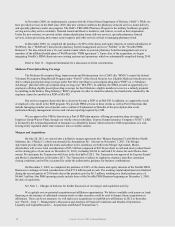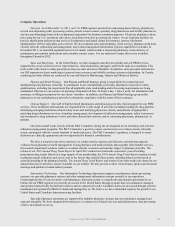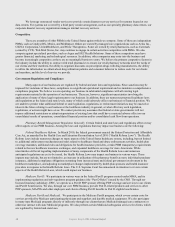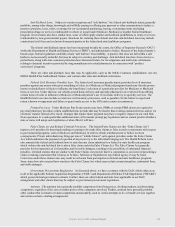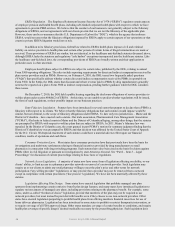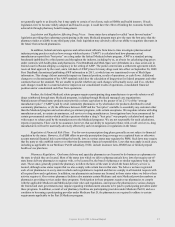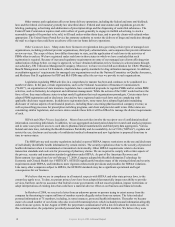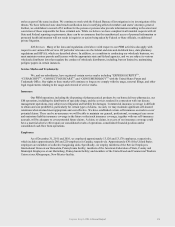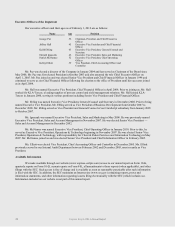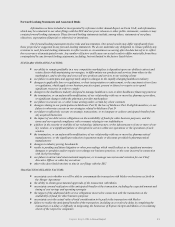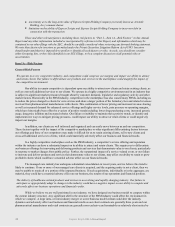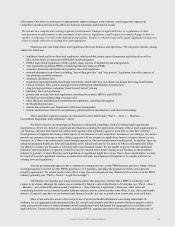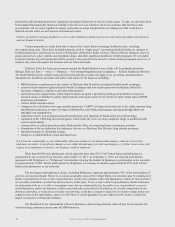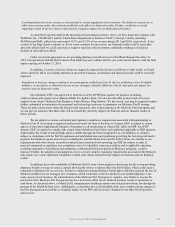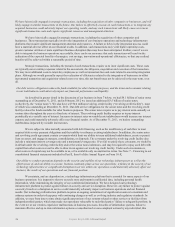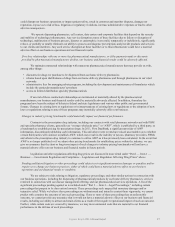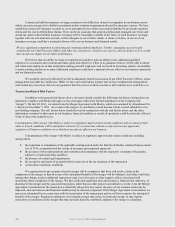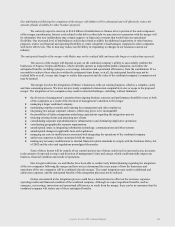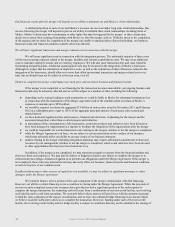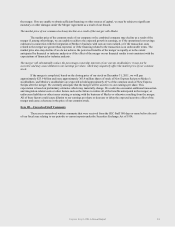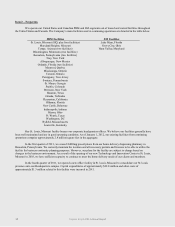Express Scripts 2011 Annual Report Download - page 24
Download and view the complete annual report
Please find page 24 of the 2011 Express Scripts annual report below. You can navigate through the pages in the report by either clicking on the pages listed below, or by using the keyword search tool below to find specific information within the annual report.
Express Scripts 2011 Annual Report
22
uncertainty as to the long-term value of Express Scripts Holding Company (currently known as Aristotle
Holding, Inc.) common shares
limitation on the ability of Express Scripts and Express Scripts Holding Company to incur new debt in
connection with the transaction
These and other relevant factors, including those risk factors in ―Part I – Item 1A—Risk Factors‖ in this Annual
Report and any other information included or incorporated by reference in this Report, and information which may be
contained in our other filings with the SEC, should be carefully considered when reviewing any forward-looking statement.
We note these factors for investors as permitted under the Private Securities Litigation Reform Act of 1995. Investors
should understand that it is impossible to predict or identify all such factors or risks. As such, you should not consider
either foregoing lists, or the risks identified in our SEC filings, to be a complete discussion of all potential risks or
uncertainties.
Item 1A—Risk Factors
General Risk Factors
We operate in a very competitive industry, and competition could compress our margins and impair our ability to attract
and retain clients. Our failure to differentiate our products and services in the marketplace could magnify the impact of
the competitive environment.
Our ability to remain competitive is dependent upon our ability to attract new clients and retain existing clients, as
well as cross-sell additional services to our clients. We operate in a highly competitive environment and in an industry that
is subject to significant market pressures brought about by customer demands, legislative and regulatory activity and other
market factors. Historically in the PBM industry, competition in the marketplace has also caused many PBMs, including us,
to reduce the prices charged to clients for core services and share a larger portion of the formulary fees and related revenues
received from pharmaceutical manufacturers with clients. This combination of lower pricing and increased revenue sharing,
as well as increased demand for enhanced service offerings and higher service levels, puts pressure on operating margins,
which have historically been offset by a variety of positive trends including lower drug purchasing costs, increased generic
usage, drug price inflation and increased rebates. Our failure or inability to maintain these positive trends, or identify and
implement new ways to mitigate pricing pressures, could impact our ability to attract or retain clients or could negatively
impact our margins.
In addition, our clients are well informed and organized and can easily move between us and our competitors.
These factors together with the impact of the competitive marketplace or other significant differentiating factors between
our offerings and those of our competitors may make it difficult for us to retain existing clients, sell to new clients and
cross-sell additional services to clients, which could materially adversely affect our business and financial results.
In a highly competitive marketplace such as the PBM industry, a competitor’s service offering and reputation
within the industry can have a substantial impact on its ability to attract and retain clients. This requires us to differentiate
our business offerings by innovating and delivering products and services that demonstrate value to our clients, particularly
in response to market changes from public policy. Further, the reputational impact of a service-related event, or our failure
to innovate and deliver products and services that demonstrate value to our clients, may affect our ability to retain or grow
profitable clients which could have a material adverse affect on our financial results.
The managed care industry has undergone substantial consolidation in recent years, and we believe this trend is
likely to continue. If one or more of our managed care clients is acquired, and the acquiring entity is not a client, then we
may be unable to retain all or a portion of the impacted business. If such acquisitions, individually or in the aggregate, are
material, they could have a material adverse effect on our business, the results of our operations and financial position.
The delivery of healthcare-related products and services is an evolving and rapidly changing industry. Our failure to
anticipate or appropriately adapt to changes in the industry could have a negative impact on our ability to compete and
adversely affect our business operations and financial results.
While we believe we are well positioned in our industry, we have designed our business model to compete within
the current industry structure. Any significant shift in the structure of the PBM industry could affect the environment in
which we compete. A large intra- or inter-industry merger or a new business model entrant could alter the industry
dynamics and adversely affect our business and financial results as our client contracts are generally three years and our
pharmaceutical manufacturer and retail contracts are generally non-exclusive and terminable on relatively short notice by


